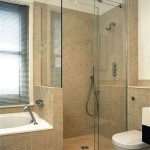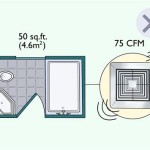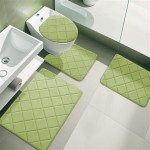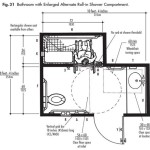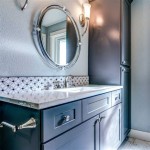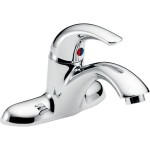How To Remove Moisture From Bathroom
Bathrooms, hot, humid places, are prone to moisture buildup. Moisture leads to mold, mildew, musty odors, and rot, so quickly removing it is important. Here are some effective ways to eliminate moisture from your bathroom:
Ventilation
Proper ventilation expels excess moisture from the air. Ensure your bathroom has an exhaust fan installed. Turn it on when showering, bathing, or using the bathroom and leave it running for 20-30 minutes afterward to allow time for the moisture to dissipate. Open windows if possible, especially during or after a shower, to increase airflow and reduce humidity.
Moisture-Absorbing Materials
Materials like silica gel packets, DampRid, and baking soda absorb excess moisture from the air. Place them on shelves, in cabinets, and near areas prone to moisture. Replace or recharge them regularly to maintain their effectiveness. Consider using moisture-wicking towels and bathmats that dry quickly, reducing the amount of moisture left in the bathroom after use.
Surface Drying
After using the bathroom, immediately wipe down all wet surfaces. Use a squeegee to remove excess water from shower walls and doors. Wipe down sinks, countertops, and mirrors with a dry towel to prevent water spots and moisture accumulation. Dry floors thoroughly after showers or baths to prevent water pooling and mildew growth.
Heat and Dehumidification
Heat helps evaporate moisture from the air, reducing humidity levels. Use a space heater or turn up the heat in your bathroom, especially during and after showers. Dehumidifiers extract moisture from the air, which can be helpful in particularly humid bathrooms. Consider using a small dehumidifier in your bathroom to reduce moisture levels.
Reduce Moisture Sources
Minimize moisture sources in your bathroom. Take shorter showers or baths to reduce the amount of steam produced. Use cold water to wash your hands and face instead of hot water, as hot water evaporates more quickly and adds humidity to the air. Fix any leaky faucets or pipes promptly to prevent water from dripping and contributing to moisture buildup.
Other Tips
Use mold-resistant paint and sealant in your bathroom. Keep your bathroom clean and disinfected to prevent mold and mildew growth. Ensure there is adequate space around your toilet, sink, and shower to allow for proper air circulation. Consider using a shower curtain liner that is mold and mildew resistant, and wash it regularly.
Conclusion
By implementing these effective moisture removal strategies, you can maintain a dry, comfortable, and healthy bathroom environment. Remember to regularly ventilate, absorb moisture, dry surfaces, use heat and dehumidification, reduce moisture sources, and follow the additional tips provided to combat moisture buildup effectively.

Five Tried And Tested Ways To Remove Moisture From Bathrooms Savvy In Somerset

How To Prevent Bathroom Mold From Taking Over Allergy Air

Stop Bathroom Condensation Once And For All

How To Stop Damp In Bathroom Expert Guide From Timberwise

Stop Bathroom Condensation Once And For All

How To Reduce Humidity In Your Bathroom We Help

How To Stop Condensation In Your Bathroom Knb Ltd

Bathroom Walls Sweating

How To Reduce Moisture In The Bathroom

How To Reduce Humidity In Your Bathroom Bathfitter
See Also
